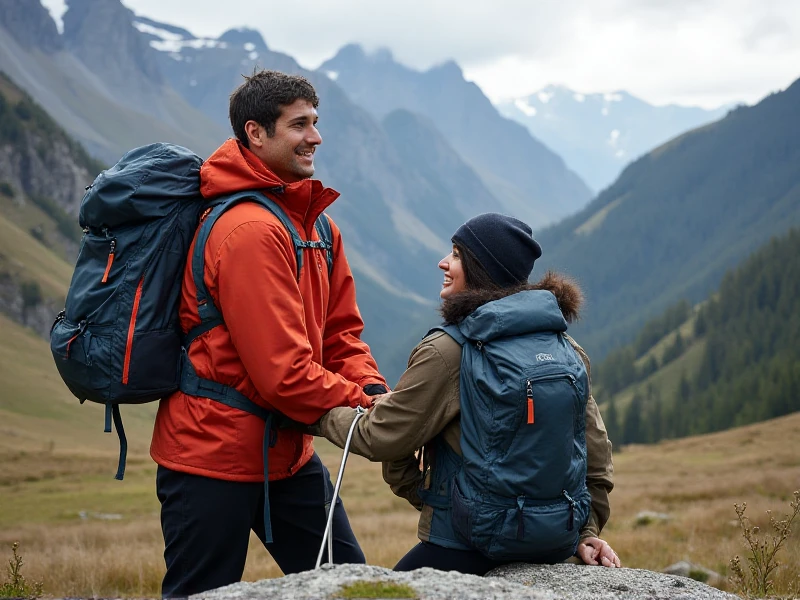Ultimate Guide to Women's Hiking Shoes: Comfort, Traction & Adventure-Ready Performance
2025-06-01

Finding the perfect pair of women's hiking shoes unlocks the trails. Whether you're tackling local day hikes or embarking on multi-day backcountry adventures, specialized footwear is non-negotiable for safety, comfort, and enjoyment. Forget flimsy sneakers. Proper women's hiking shoes offer crucial support, protect your feet, and provide the grip needed for diverse terrain. This guide breaks down what truly matters when choosing your trail companions.
Why Specialized Hiking Shoes Matter
Women's feet aren't just smaller versions of men's. They often have a narrower heel relative to the forefoot, a different arch structure, and sometimes lighter body weight, impacting how shoes feel and perform. Women-specific hiking shoes account for these anatomical variations. A proper fit prevents blisters, hotspots, and rolled ankles. Dedicated outsoles provide aggressive traction on mud, rocks, and loose scree, reducing slip risks significantly compared to standard athletic shoes. Furthermore, supportive midsoles cushion impacts and reduce fatigue on long descents, protecting joints.
Key Features to Prioritize
1. Fit & Comfort Supreme: This is paramount. Prioritize trying shoes on in the afternoon when feet are slightly swollen. Wear the exact socks you'll hike in (typically medium-weight wool or synthetic blends). Ensure a snug heel with minimal slippage (lock-down is crucial!), ample room to wiggle toes (especially on descents), and no pressure points on the sides or arches. Always walk both downhill and uphill on an incline board in-store if possible.
2. Outsole Traction: Look for deep, multi-directional lugs made from high-quality rubber compounds (like Vibram®). Lug depth varies:
Low Profile: Ideal for packed trails, dry conditions, or approach shoes.
Moderate Depth: Versatile for mixed terrain, including some mud and loose gravel.
Aggressive Lugs: Essential for serious off-trail hiking, significant mud, or snow.
3. Midsole Support & Cushioning: This dictates comfort and shock absorption.
EVA Foam: Common, lightweight, offers decent cushioning but can compress over time.
PU Foam: More durable and supportive than EVA, but often slightly heavier.
TPU Plates: Sometimes integrated to resist rock bruising underfoot on technical terrain.
4. Upper Construction & Protection:
Materials: Split-grain leather (lighter, less waterproof), full-grain leather (durable, protective, may require break-in), synthetic mesh (lightweight, breathable, quick-drying).
Waterproofing: Crucial for wet climates or morning dew. Gore-Tex® is the gold standard, offering waterproof breathability. Non-waterproof shoes excel in hot, dry conditions with superior ventilation.
Protection: Look for sturdy toe bumpers and reinforced sidewalls or rand to guard against rocks and roots.
5. Height Matters:
Hiking Shoes (Low-Cut): Lightest, most flexible. Ideal for day hikes, groomed trails, minimalist approach. Offers less ankle support.
Hiking Boots (Mid-Cut): Covers the ankle joint providing crucial stability and protection on uneven terrain or with heavier packs. Versatile for most hiking scenarios.
Backpacking Boots (High-Cut): Maximum ankle support for carrying substantial weight over rugged, multi-day treks or off-trail navigation. Often stiffer and heavier.
6. Weight: Lighter shoes (low or mid-cut) feel nimble and reduce fatigue. Heavier boots (mid/high-cut) offer more protection and support for demanding loads/trails. Find your balance based on terrain and pack weight.
Top Styles & Technologies for Women Hikers
Lightweight Trail Runners: For fast, dry trails; breathable mesh uppers.
Waterproof Mid-Hikers: The "sweet spot" for most women - offering protection, support, and waterproofing for varied conditions.
Narrow Fit Options: Many brands (like Salomon, La Sportiva) excel at narrower heel profiles.
Wide Widths: Available in key models from brands like Keen, Altra, Merrell.
Zero-Drop/Minimalist: Brands like Altra offer flat sole-to-heel profiles promoting natural gait, but require adaptation.
Caring for Your Investment
Extend the life of your women's hiking shoes:
1. Clean dirt/mud off promptly using a soft brush and lukewarm water after hikes. Avoid harsh detergents.
2. Air Dry Naturally: Never use direct heat like radiators or hairdryers. Stuff with newspaper to absorb moisture. Remove insoles separately.
3. Regularly apply specific conditioners for leather uppers or DWR treatments for synthetics to maintain water repellency.
4. Alternate shoes to allow them to fully de-compress and dry between hard uses.
Ready for the Trail?
Choosing the right women's hiking shoes is a personal journey influenced by your anatomy, hiking goals, terrain, and preferences. Understand the features – fit, traction, support, weight, and weather protection. Visit a specialty outdoor retailer for professional fitting and expert advice. Trying on multiple brands and styles is highly recommended. Invest wisely in a pair that feels comfortable and inspires confidence from the moment you lace up. Happy feet lead to happy miles exploring the great outdoors. Whether seeking ankle support for mountain climbs or low-cut flexibility for coastal trails, the perfect hiking footwear empowers you to hike further, safer, and with pure joy.
Category: